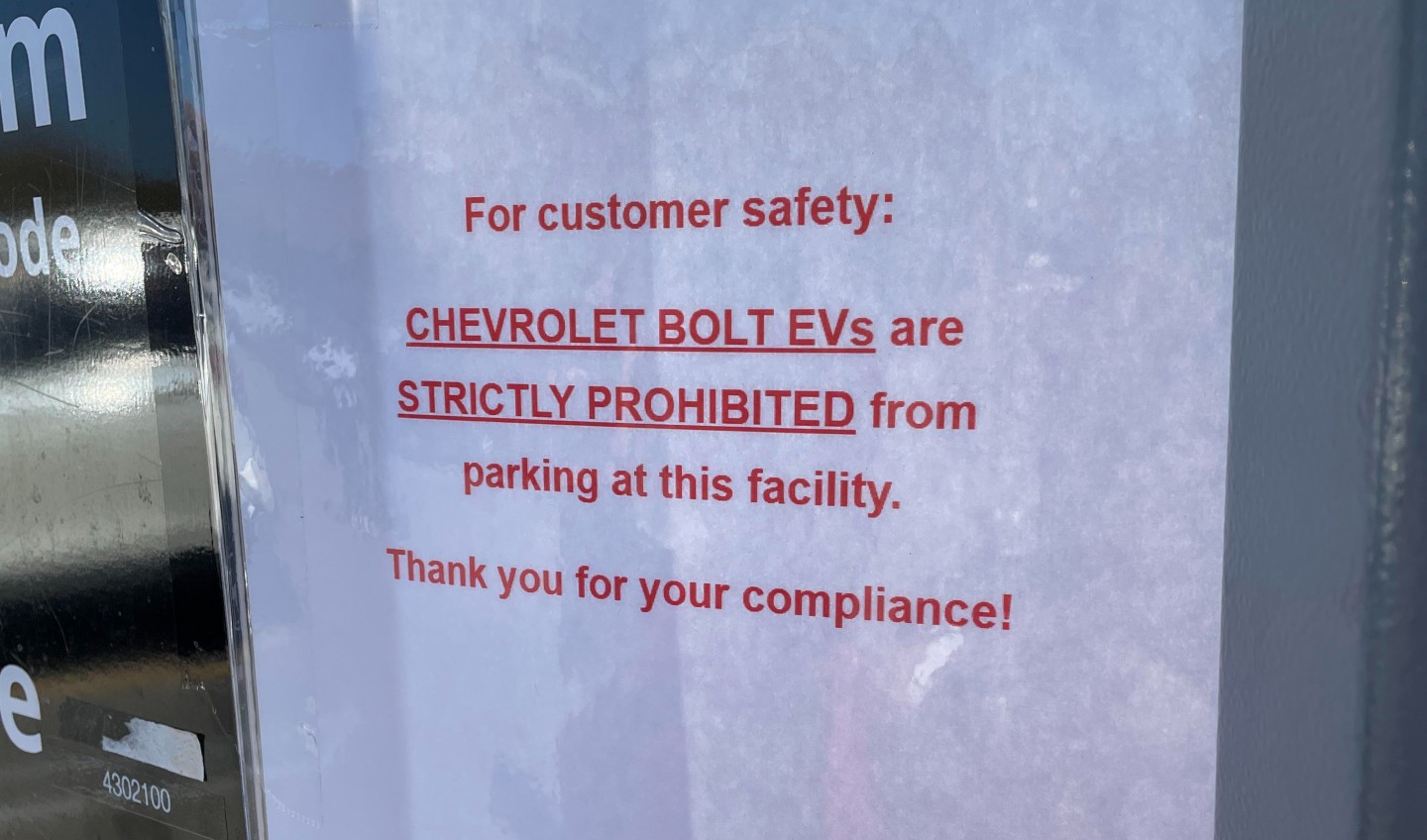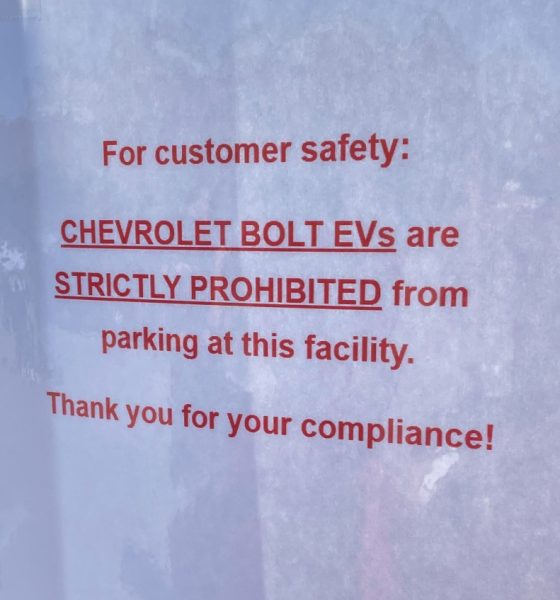

News
General Motors ends the Chevy Bolt, along with an old narrative [Op-Ed]
General Motors’ decision to end the Chevy Bolt also brought closure to an old narrative that the vehicle, which has been plagued by a disastrous perspective driven by major battery issues, is not dependable. Ending what accounted for more than 98 percent of its 2022 EV sales last year may be more than a public relations move than anything.
There is no doubt the Chevy Bolt is a common option among electric vehicle buyers. The car is still commonly considered one of the more affordable electric options on the market, and the most recent model year was no different. Offering both the EV and slightly more spacious EUV at a price point below $30,000 is just what GM needed to surge sales of sustainable powertrains within its offerings after stalled efforts to widely manufacture its other models, like the GMC Hummer EV and Cadillac Lyriq, slowed the so-called “leader in EVs” potential rise to prominence.
While GM executives noted yesterday during the company’s Q1 2023 Earnings Call that the termination of the Bolt EV and EUV will make way for more popular and soon-to-be-offered pickups and SUVs, it is not a far-fetched thought to think that eliminating the two models is a move that offers both high risks and high rewards. On one hand, GM has been extremely dependent on the Bolt models to drive EV sales. On the other, the vehicles are basically the only reason GM has any credibility in the space.
GM bids farewell to the Chevy Bolt, bringing closure to its best-selling EV
Eliminating the Bolt means two things: GM will have immense pressure to ramp up production of its other vehicles. If successful, it will truly launch itself into an entirely new status. Failure could set the automaker back years in terms of what it has worked so hard to build, all of which can be attributed to the Bolt’s prowess as the manufacturer’s most popular EV.
But even more important is that an old narrative that has hovered over the Bolt like a dark storm cloud will go, and that is that it is a car plagued with old stories of battery issues, which were widely fixed as a result of a major overhaul that cost GM over $1 billion.
Various Bolt EVs were widely followed by the massive recall, which the automaker paid $1.8 billion to remedy. During the Q2 2021 Earnings call, the company said it would voluntarily recall all 2020-2022 model year vehicles to fix a series of manufacturing defects within battery cells. These problems forced owners to do things like limit the state of charge, park outside of their garages, and even avoid certain parking lots, as Bolts were banned from parking on some properties.
It worked quickly to fix the issues, and eventually, the Bolts were handed back to their owners and were safe to drive once again.
While the problems and defects disappeared, the opinions didn’t.
It begs the question of whether GM is eliminating the Bolt for another reason, at least partially. Bringing an end to a vehicle that brought so much of both triumph and turmoil to the GM name has its positives and negatives. Ultimately, GM plans to be all-electric in the long term, and getting off the ground running with a new lineup of EVs on its Ultium platform is the most crucial part of the process.
Unfortunately, this includes bringing closure to a model that may come with a negative narrative in the future.
Don’t hesitate to contact us with tips! Email us at tips@teslarati.com, or you can email me directly at joey@teslarati.com.

News
Tesla FSD fleet is nearing 7 billion total miles, including 2.5 billion city miles
As can be seen on Tesla’s official FSD webpage, vehicles equipped with the system have now navigated over 6.99 billion miles.

Tesla’s Full Self-Driving (Supervised) fleet is closing in on almost 7 billion total miles driven, as per data posted by the company on its official FSD webpage.
These figures hint at the massive scale of data fueling Tesla’s rapid FSD improvements, which have been quite notable as of late.
FSD mileage milestones
As can be seen on Tesla’s official FSD webpage, vehicles equipped with the system have now navigated over 6.99 billion miles. Tesla owner and avid FSD tester Whole Mars Catalog also shared a screenshot indicating that from the nearly 7 billion miles traveled by the FSD fleet, more than 2.5 billion miles were driven inside cities.
City miles are particularly valuable for complex urban scenarios like unprotected turns, pedestrian interactions, and traffic lights. This is also the difference-maker for FSD, as only complex solutions, such as Waymo’s self-driving taxis, operate similarly on inner-city streets. And even then, incidents such as the San Francisco blackouts have proven challenging for sensor-rich vehicles like Waymos.
Tesla’s data edge
Tesla has a number of advantages in the autonomous vehicle sector, one of which is the size of its fleet and the number of vehicles training FSD on real-world roads. Tesla’s nearly 7 billion FSD miles then allow the company to roll out updates that make its vehicles behave like they are being driven by experienced drivers, even if they are operating on their own.
So notable are Tesla’s improvements to FSD that NVIDIA Director of Robotics Jim Fan, after experiencing FSD v14, noted that the system is the first AI that passes what he described as a “Physical Turing Test.”
“Despite knowing exactly how robot learning works, I still find it magical watching the steering wheel turn by itself. First it feels surreal, next it becomes routine. Then, like the smartphone, taking it away actively hurts. This is how humanity gets rewired and glued to god-like technologies,” Fan wrote in a post on X.
News
Tesla starts showing how FSD will change lives in Europe
Local officials tested the system on narrow country roads and were impressed by FSD’s smooth, human-like driving, with some calling the service a game-changer for everyday life in areas that are far from urban centers.

Tesla has launched Europe’s first public shuttle service using Full Self-Driving (Supervised) in the rural Eifelkreis Bitburg-Prüm region of Germany, demonstrating how the technology can restore independence and mobility for people who struggle with limited transport options.
Local officials tested the system on narrow country roads and were impressed by FSD’s smooth, human-like driving, with some calling the service a game-changer for everyday life in areas that are far from urban centers.
Officials see real impact on rural residents
Arzfeld Mayor Johannes Kuhl and District Administrator Andreas Kruppert personally tested the Tesla shuttle service. This allowed them to see just how well FSD navigated winding lanes and rural roads confidently. Kruppert said, “Autonomous driving sounds like science fiction to many, but we simply see here that it works totally well in rural regions too.” Kuhl, for his part, also noted that FSD “feels like a very experienced driver.”
The pilot complements the area’s “Citizen Bus” program, which provides on-demand rides for elderly residents who can no longer drive themselves. Tesla Europe shared a video of a demonstration of the service, highlighting how FSD gives people their freedom back, even in places where public transport is not as prevalent.
What the Ministry for Economic Affairs and Transport says
Rhineland-Palatinate’s Minister Daniela Schmitt supported the project, praising the collaboration that made this “first of its kind in Europe” possible. As per the ministry, the rural rollout for the service shows FSD’s potential beyond major cities, and it delivers tangible benefits like grocery runs, doctor visits, and social connections for isolated residents.
“Reliable and flexible mobility is especially vital in rural areas. With the launch of a shuttle service using self-driving vehicles (FSD supervised) by Tesla in the Eifelkreis Bitburg-Prüm, an innovative pilot project is now getting underway that complements local community bus services. It is the first project of its kind in Europe.
“The result is a real gain for rural mobility: greater accessibility, more flexibility and tangible benefits for everyday life. A strong signal for innovation, cooperation and future-oriented mobility beyond urban centers,” the ministry wrote in a LinkedIn post.
News
Tesla China quietly posts Robotaxi-related job listing
Tesla China is currently seeking a Low Voltage Electrical Engineer to work on circuit board design for the company’s autonomous vehicles.

Tesla has posted a new job listing in Shanghai explicitly tied to its Robotaxi program, fueling speculation that the company is preparing to launch its dedicated autonomous ride-hailing service in China.
As noted in the listing, Tesla China is currently seeking a Low Voltage Electrical Engineer to work on circuit board design for the company’s autonomous vehicles.
Robotaxi-specific role
The listing, which was shared on social media platform X by industry watcher @tslaming, suggested that Tesla China is looking to fill the role urgently. The job listing itself specifically mentions that the person hired for the role will be working on the Low Voltage Hardware team, which would design the circuit boards that would serve as the nervous system of the Robotaxi.
Key tasks for the role, as indicated in the job listing, include collaboration with PCB layout, firmware, mechanical, program management, and validation teams, among other responsibilities. The role is based in Shanghai.
China Robotaxi launch
China represents a massive potential market for robotaxis, with its dense urban centers and supportive policies in select cities. Tesla has limited permission to roll out FSD in the country, though despite this, its vehicles have been hailed as among the best in the market when it comes to autonomous features. So far, at least, it appears that China supports Tesla’s FSD and Robotaxi rollout.
This was hinted at in November, when Tesla brought the Cybercab to the 8th China International Import Expo (CIIE) in Shanghai, marking the first time that the autonomous two-seater was brought to the Asia-Pacific region. The vehicle, despite not having a release date in China, received a significant amount of interest among the event’s attendees.








